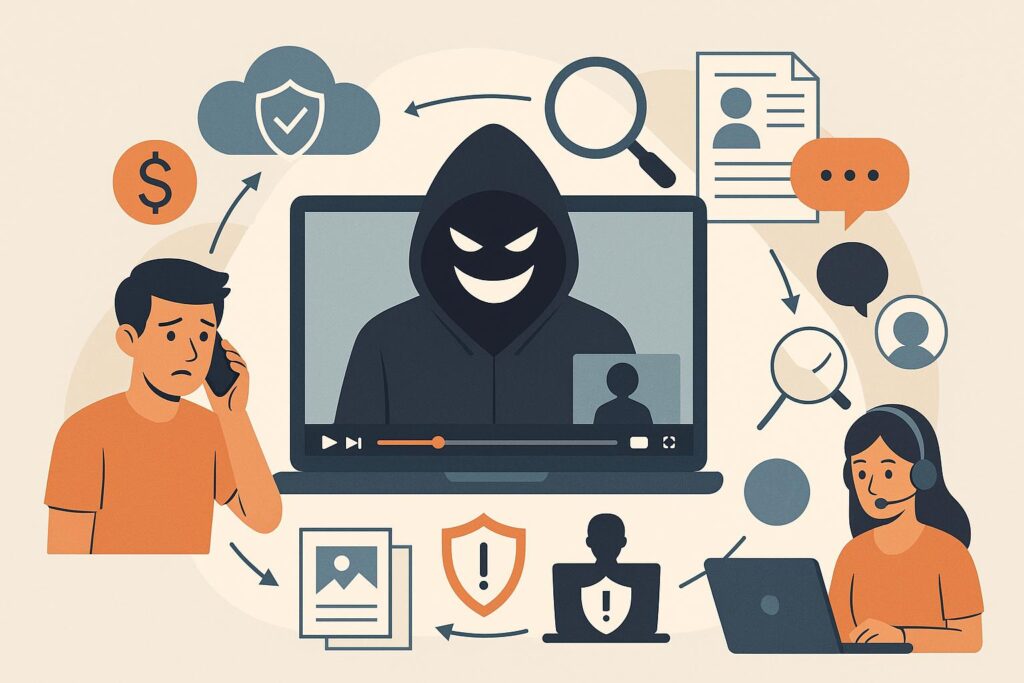
Webcam Sextortion and the Business of Protection
Webcam sextortion, known in South Korea as 몸캠피싱, has evolved from a fringe crime into a full-fledged cyber epidemic. What was once dismissed as isolated incidents has now become one of the most urgent digital threats, particularly for men in their teens and twenties. But beyond the social panic, a new business frontier is quietly taking shape—the sextortion response industry.
From AI-driven takedown services to emergency consulting and digital forensic firms, this dark trend is fueling a new economy of digital protection and psychological recovery. And at the forefront of this industry is Arklink (https://arklink.co.kr), a South Korea-based platform dedicated to helping victims regain control.
What Is Webcam Sextortion ?
Webcam sextortion involves criminals often part of organized networks who lure victims into sharing explicit content via video chat apps or social platforms. Once the footage is recorded, attackers threaten to send it to friends, family, or co-workers unless a ransom is paid. The emotional distress is immediate, but the damage can extend far beyond impacting mental health, careers, and even leading to suicide.
While public awareness campaigns have grown, so has the sophistication of attackers including fake identities, deepfakes, and mass-targeting tactics using messaging bots.
The Rise of a Sextortion Response Industry
Just as ransomware threats birthed a cybersecurity sector worth billions, webcam sextortion is creating its own digital economy. Here’s how:
1. Content Takedown Services
Firms like Arklink use AI tools, DMCA protocols, and human investigators to locate and request the removal of private content from major platforms and illegal sites. The faster this process happens, the lower the risk of reputational damage.
2. Digital Evidence & Forensics
Legal cases require solid digital evidence. New startups now offer forensic documentation of extortion threats, timestamps, and message trails transforming victim reports into usable court material.
3. Emergency Counseling
The emotional trauma from webcam sextortion is real. Businesses are offering emergency psychological support through chat apps or phone, many of them 24/7. Some even offer anonymous sessions for victims hesitant to report to the police.
4. Privacy Insurance & Legal Aid
Cyber insurance products now include clauses for privacy breaches and sextortion. Law firms also bundle in legal guidance to help navigate takedown requests, police filings, and compensation claims.
A Key Player in Korea’s Sextortion Defense Market
Arklink (https://arklink.co.kr) stands out by providing a comprehensive recovery platform. Their services range from AI-powered link deletion to one-on-one crisis consultation and mental health support. With a strong reputation among Korean users and growing interest from overseas clients, Arklink exemplifies how trust-based platforms can turn fear into action.
Key strengths of Arklink’s business model include:
- Rapid Response Protocols (within hours)
- Anonymity Guarantees to protect identity
- Multilingual Support for global cases
- Legal-Forensic Collaboration to help with law enforcement filings
For anyone under threat, Arklink becomes a one-stop crisis response team.
Market Trends: From Victim Shame to Commercial Opportunity
The market for webcam sextortion solutions is growing rapidly. Several factors contribute to this surge:
- Social stigma deters victims from going to the police, making private services more desirable.
- AI-enhanced extortion has increased both the scale and believability of scams.
- Mobile-first crimes demand fast, app-based solutions—leading to SaaS-like models for takedown and prevention.
- Teenagers and young adults are most at risk, and they prefer fast, digital-first response services over bureaucratic procedures.
As the volume of cases climbs, so does the demand for personalized cybersecurity, trauma recovery, and digital hygiene training—all of which are being met by a growing ecosystem of service providers.
Is This a Profitable Sector?
Yes, though morally complex, the business of digital damage control is highly scalable and increasingly necessary. Pricing models are usually tiered:
- Basic takedown: $100–$300
- Full recovery package: $500–$1,000
- Premium protection plans: Subscription-based ($20–$50/month)
Large-scale B2B solutions for schools, influencers, and corporate clients are emerging, where mass education and early detection systems are bundled into cybersecurity services.
Conclusion: Crisis Breeds Innovation
While webcam sextortion is an alarming issue, it’s also reshaping the way we think about digital safety, online identity, and emergency tech services. As South Korea faces a particularly high volume of these crimes, it’s also leading the charge in response innovation.
Companies like Arklink aren’t just helping victims. They’re redefining what digital safety means in a hyperconnected world.